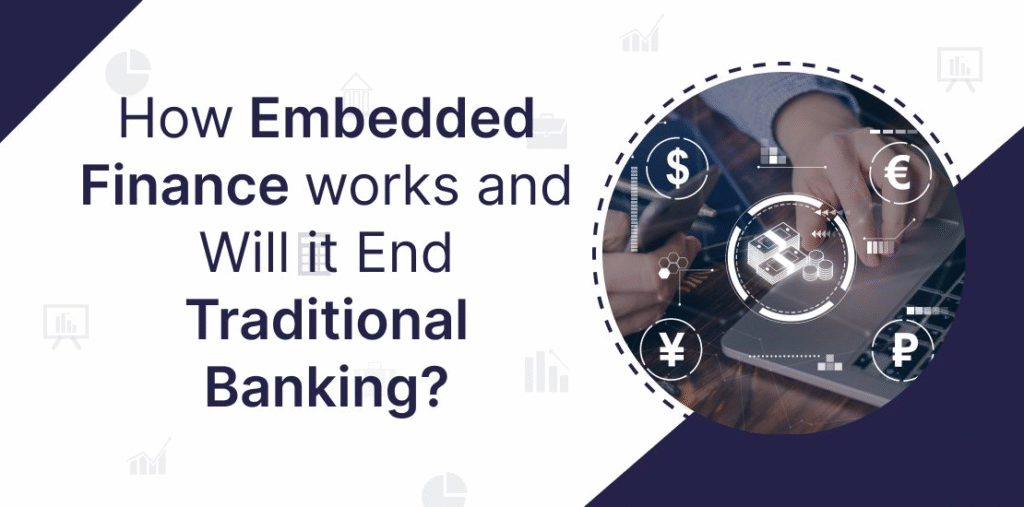The financial landscape is undergoing an unprecedented metamorphosis, driven by cutting-edge technologies that are fundamentally reshaping how we think about money, investments, and financial services. Revolutionizing finance has become more than just a buzzword—it represents a seismic shift that’s democratizing access to financial tools, enhancing security, and creating entirely new economic possibilities.
The Digital Payment Revolution

Digital payments have emerged as the cornerstone of modern financial transformation. Mobile wallets, contactless payments, and peer-to-peer payment platforms have virtually eliminated the need for physical cash in many transactions. Companies like PayPal, Venmo, and emerging fintech startups have created ecosystems where money moves instantly across borders and devices.
The rise of Buy Now, Pay Later (BNPL) services has further disrupted traditional credit models, offering consumers flexible payment options without the complexity of traditional loans. This shift is revolutionizing finance by making credit more accessible while reducing the barriers that once prevented many from participating in the digital economy.
Artificial Intelligence and Machine Learning: The Smart Money Revolution
Artificial intelligence stands at the forefront of financial innovation, transforming everything from fraud detection to investment management. AI-powered algorithms can analyze vast datasets in real-time, identifying patterns and anomalies that would be impossible for human analysts to detect manually.
Robo-advisors have democratized investment management, providing sophisticated portfolio optimization and rebalancing services to retail investors at a fraction of traditional costs. These platforms use machine learning to continuously improve their recommendations, adapting to market conditions and individual risk profiles with remarkable precision.
Financial institutions are leveraging AI for credit scoring, moving beyond traditional metrics to assess creditworthiness using alternative data sources such as social media activity, utility payments, and shopping patterns. This approach is revolutionizing finance by extending credit opportunities to previously underserved populations.
Blockchain and Cryptocurrency: Decentralizing Financial Power

Blockchain technology represents perhaps the most radical departure from traditional financial systems. By creating decentralized, immutable ledgers, blockchain eliminates the need for intermediaries in many financial transactions, reducing costs and increasing transparency.
Cryptocurrencies have evolved from speculative assets to legitimate financial instruments. Bitcoin and Ethereum have gained institutional acceptance, with major corporations adding them to their balance sheets and traditional financial institutions offering crypto services to their clients.
Smart contracts are automating complex financial agreements, from insurance claims to loan disbursements, executing predetermined conditions without human intervention. This automation is revolutionizing finance by reducing processing times, minimizing errors, and cutting operational costs.
Open Banking and API Integration
Open banking regulations are forcing traditional financial institutions to share customer data (with consent) through secure APIs, fostering innovation and competition. This regulatory shift has enabled fintech companies to build sophisticated financial management tools that aggregate data from multiple sources.
Personal finance management apps can now provide holistic views of an individual’s financial health, tracking spending across multiple accounts, predicting cash flow, and offering personalized financial advice. This integration is revolutionizing finance by putting comprehensive financial insights directly into consumers’ hands.
Embedded Finance: Financial Services Everywhere

The concept of embedded finance is transforming how and where financial services are delivered. Rather than visiting banks or dedicated financial platforms, consumers can now access lending, payments, and insurance services directly within e-commerce platforms, ride-sharing apps, and social media networks.
This seamless integration means that a small business owner can secure a loan while managing inventory, or a consumer can purchase insurance while booking a vacation. By embedding financial services into everyday digital experiences, companies are revolutionizing finance through convenience and context-aware offerings.
RegTech: Compliance Through Innovation
Regulatory technology is helping financial institutions navigate increasingly complex compliance requirements while reducing costs and improving accuracy. Machine learning algorithms can monitor transactions in real-time, flagging suspicious activities and ensuring adherence to anti-money laundering regulations.
Automated reporting systems generate regulatory filings with minimal human intervention, while natural language processing helps institutions interpret new regulations and assess their impact on existing operations.
The Rise of Neobanks and Digital-First Institutions

Digital-only banks are challenging traditional banking models by offering streamlined, mobile-first experiences without the overhead of physical branches. These neobanks can pass cost savings to customers through higher interest rates, lower fees, and innovative features like automatic savings programs and spending insights.
Many neobanks are targeting specific demographics or use cases, from freelancers and small businesses to international travelers, providing tailored services that traditional banks often overlook. This focused approach is revolutionizing finance by serving previously underserved market segments.
Quantum Computing: The Next Frontier
While still in early stages, quantum computing promises to transform financial modeling, risk assessment, and cryptographic security. Quantum algorithms could solve complex optimization problems in portfolio management and enable more sophisticated fraud detection systems.
However, quantum computing also poses challenges to current cryptographic methods, prompting the financial industry to develop quantum-resistant security protocols to protect sensitive financial data.
Challenges and Considerations

Despite tremendous opportunities, the tech-driven transformation of finance faces significant challenges. Cybersecurity threats are evolving alongside technological advances, requiring constant vigilance and investment in protective measures. Regulatory frameworks struggle to keep pace with innovation, creating uncertainty for both established institutions and emerging fintech companies.
The digital divide remains a concern, as technological solutions may inadvertently exclude populations without access to smartphones or reliable internet connectivity. Ensuring that financial innovation benefits all segments of society remains a critical challenge.
The Future of Finance
The technologies revolutionizing finance today are just the beginning. As artificial intelligence becomes more sophisticated, blockchain networks more scalable, and quantum computing more practical, we can expect even more dramatic changes in how financial services are conceived, delivered, and experienced.
The ultimate goal of this transformation is creating a more inclusive, efficient, and transparent financial system that serves the needs of individuals and businesses in an increasingly digital world.
(FAQs) About Revolutionizing Finance
Q1 What technologies are primarily revolutionizing finance today?
The main technologies driving financial transformation include artificial intelligence and machine learning, blockchain and cryptocurrencies, mobile and digital payment systems, open banking APIs, and cloud computing. These technologies are enabling faster transactions, better security, personalized services, and reduced costs across the financial sector.
Q2 How is artificial intelligence changing personal banking?
AI is transforming personal banking through chatbots for customer service, personalized financial advice, fraud detection, credit scoring using alternative data, and robo-advisors for investment management. Banks use AI to analyze spending patterns, predict customer needs, and offer tailored financial products and services.
Q3 Are cryptocurrencies replacing traditional banking systems?
Cryptocurrencies are not replacing traditional banking but rather complementing existing financial systems. While crypto offers benefits like faster cross-border payments and financial inclusion, traditional banks provide stability, regulation, and services that cryptocurrencies currently cannot match. Many financial institutions are now integrating crypto services alongside traditional offerings.
Q4 What is embedded finance and how does it benefit consumers?
Embedded finance refers to integrating financial services directly into non-financial platforms and applications. This means accessing loans, payments, or insurance within e-commerce sites, ride-sharing apps, or social platforms. Benefits include convenience, seamless user experience, contextual financial services, and reduced friction in accessing financial products.
Q5 What are the main security concerns with digital financial transformation?
Key security concerns include cyber attacks and data breaches, identity theft and fraud, regulatory compliance challenges, privacy issues with data sharing, and the need for quantum-resistant encryption. Financial institutions are investing heavily in cybersecurity measures, including AI-powered threat detection, multi-factor authentication, and blockchain-based security solutions to address these challenges.
For More Information Visit Bratish Magazine

















































































